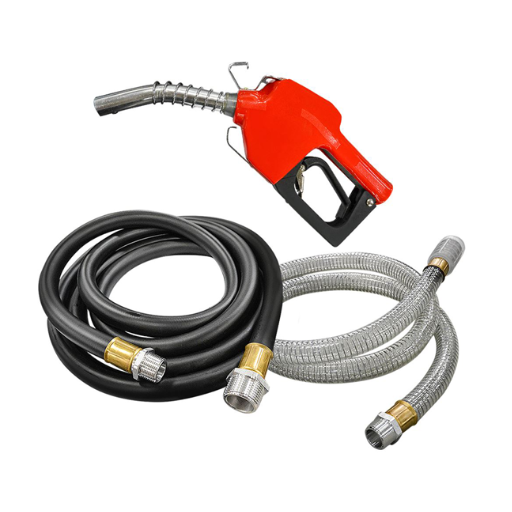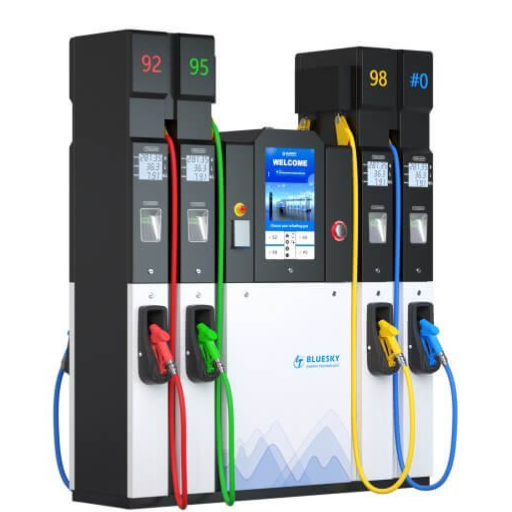The gas station is a familiar part of everyday life, offering a convenient place to fuel up, buy snacks, and access other small conveniences. But have you ever wondered how much money these establishments make? While present in every city and along highways, the business of running a gas station is way more complicated than it appears. From fluctuating fuel prices to additional income from car washes and other in-store sales, gas stations generate revenue in some unexpected ways. This article examines the entire financial landscape of a gas station, exploring how it generates revenue, the factors that influence profitability, and the hidden challenges it faces. Whether just curious or seriously considering investing, you’ll learn quite a bit about the business behind the pump.
Overview of Gas Station Revenue
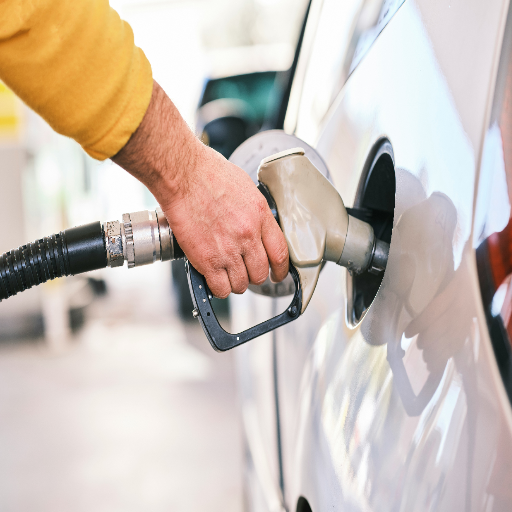
There are two primary sources of revenue for gas stations: fuel sales and ancillary services. Fuel sales, the most significant portion of income, typically operate on skinny profit margins due to fluctuating oil prices, with competition always present. To raise profitability, a gas station greatly depends on the convenience store, wherein snacks, drinks, and some groceries are sold at higher profit margins. Other services, such as car washes, air pumps, and space rental to ATM operators, may generate additional revenue. Multiple income sources act as a balancing mechanism alongside the gas station business, which is highly competitive and price-sensitive.
What is Gas Station Revenue?
Gas stations, categorized into two broad groups, generate their revenues from both fuel and non-fuel sales. Fuel sales comprise a significant share of the revenues recorded by a gas station, and they are sold at very slim margins, as low as a few cents per gallon. High transaction volumes and recessionary influences, as well as fluctuations in oil prices, have a significant impact on profitability. The gross margin, in terms of profits, after covering all costs such as wholesale fuel prices, shipping costs, and credit card fees, is reported to vary between 10 and 15 cents per gallon of gasoline.
Conversely, nonfuel sales bring the most significant margin on profits. Items sold in the convenience store, which include snacks, drinks, lottery tickets, and groceries, usually have profit margins over 30%. For instance, the profit margin on bottled beverages and packaged snacks is between 40% and 50%, which is very important to the overall profit. A car wash, depending on its location and the service it offers, is another area generating earnings of $6-$15 per wash. Air pump fees and ATM commissions also provide auxiliary incomes.
Another primary diversification strategy adopted by many gas stations to expand their revenue base is leasing space for a food franchise or kiosk, creating additional revenue streams through partnerships. Higher-margin non-fuel retail sales provide a great complement to fuel sales, enabling gas stations, unlike many other retail businesses, to operate through times of economic uncertainty. The balanced approach has kept gas station operators competitive and helped them to meet the varied needs of their customers.
Components of Revenue for Gas Stations
Gas stations generate revenue from these two main streams: fuel sales and non-fuel sales. Bulk fuel sales typically account for the majority of revenue at gas stations, as consumers consistently demand gasoline and diesel. Profit margins on fuel are, however, relatively low, put under pressure at times by varying oil prices and also by stiff competition. Hence, the fight for more revenue from various non-fuel avenues, mainly convenience-store sales, which usually have better profit margins. The most popular products sold are snacks, drinks, cigarettes, and lottery tickets, which attract customers while generating substantial profits.
Many gas stations have also entered partnerships with food chains to introduce either quick-service restaurants or coffee shops within their premises. Other potentially profitable amenities include car washes, air pumps, and ATMs, thus offering income diversification. Complementary offerings can be used to create a healthy synergy with fuel sales, thereby maximizing profit opportunities and providing customers with solutions for their diverse needs. This dual nature of the business somehow keeps it resilient in unpredictable market situations.
Comparative Revenue Analysis of Gas Stations
Gas stations generate revenue through a series of core services and ancillary operations. Fuel sales remain the largest revenue source, typically accounting for over 50% of total sales. However, the profit margin on fuel is generally low due to competitive forces and the volatility of oil prices. To achieve profitable margins, stations fare better by selling convenience store items with higher profit margins, which contribute roughly 30-40% of gross profits. Among the most popular products are snacks, carbonated beverages, and tobacco.
Car washes and fast-food partnerships are highly profitable complementary revenue streams. On average, car wash providers add tens of thousands of dollars to their annual revenue, with premium washes bringing in even more. Therefore, air pumps, ATMs, and EV charging stations are fast-growing trends. In particular, EV chargers are poised to become a significant avenue of revenue and traffic as the electric vehicle market gains momentum.
Region-based differences also impact gas station earnings. Downtown stations located in high-traffic areas typically enjoy a higher profit margin than those in rural areas, due to the increased volume of customers and higher sales of convenience items. Gas stations can further enhance growth by understanding these subtle interplays and tailoring their offerings accordingly to earn a better gross income.
Profit Margins in the Gas Station Industry
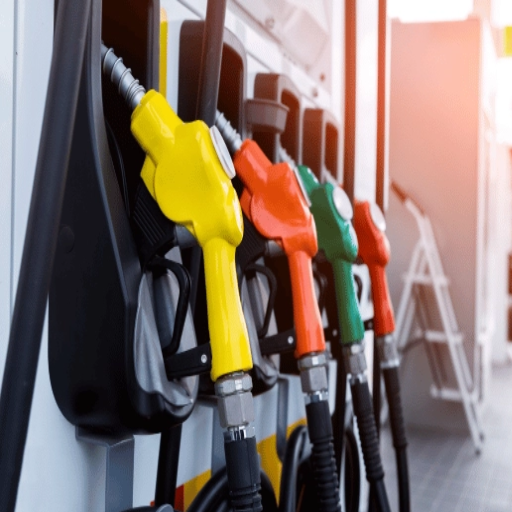
Typically, profit margins are slim in this industry, generally ranging from 1 to 3% for fuel sales per liter. Most gas stations compensate for selling convenience-store merchandise, such as candy and beverages, which have considerably higher profit margins—services like car washes and air pumps pocket the rest of the high profits. The revenues from fuel sales, combined with revenues from supplementary streams, are crucial for this industry to generate a profit.
Understanding Profit Margins
Profitability in gas stations is a function of several factors, including oil price fluctuations, the cost of doing business, and the respective consumer behaviors. On average, the profit margin of gas stations is considered thin, at around 1-3% per gallon of fuel sold, primarily due to the volatility in crude oil pricing and taxes. That being said, present data suggest that supplementary revenue sources have become very much critical.
Convenience store sales can account for approximately 30-40% of a gas station’s profits. Such a margin premium is earned on items like snacks, beverages, and cigarettes. From an entrance-level perspective, snacks often yield a profit margin of more than 20 percent on their own. Also, profit margins from car wash activities are promising, with some gas stations noting a 25-30% profit contribution from the car wash service. Even smaller revenue-generating activities, such as pumping air into tires and cleaning interiors, accumulate profits over time.
Leasing space to support trade, which can include fast food or even ATM stands, is another frequent method, ensuring that a significant portion of the earnings is a fixed monthly income. The profitability of stations is further enhanced by being located near highways or residential areas, which increases traffic. These on-ground means further stand as testament to the critical importance of diversifying into non-fuel revenues for sustaining and enhancing profitability in the industry.
Factors Influencing Gas Station Profit Margins
A variety of factors impact the profitability of gas stations, stretching from global market conditions to some local operational choices. Among other factors, one notable variable is the fluctuation of crude oil prices, which in turn affects wholesale fuel costs. According to recent reports and figures from relevant industry associations, prices have experienced significant volatility over the past couple of years, with global circumstances playing a crucial role. OPEC policies, geopolitical tensions, and supply chain disruptions are a few factors to mention. Such fluctuations thin the profit margins, as gas stations generally lose the battle in the last price adjustments in order not to lose sales.
The other is operating costs, such as labor, utilities, taxes, and licensing fees. Data shows that labor costs can represent up to 10% of a station’s total operating expenses. With the increasing effect of minimum wage in certain areas, that percentage is likely to rise. Location also works against gross margin, as those near highways or in busy metropolitan centers can generate significantly more traffic, leading to increased fuel sales and additional opportunities for non-fuel revenues, such as convenience sales or car washes. Recent statistics report that gas station convenience stores generate over $250 billion annually in the U.S., underscoring the significance of these revenue streams to overall profitability.
Consumer demand also plays a significant role, with factors such as fuel-efficient businesses and the adoption of electric vehicles (EVs) at play. With the EV sales nearing 14% of global vehicle sales in 2023, gas stations are starting a slow decline in conventional fuel demand. To stay relevant in a transitioning market, the majority of enterprises are setting up EV charging infrastructure to diversify their offerings. In summary, all these factors represent the complex scenario that gas stations must navigate to narrow their profit margins.
Typical Profit Margins for Gas Stations
The gasoline retailing business is classically regarded as one where profit margins are thin, with average net profits hovering around 1.4 to 3% of net sales. This thin margin is due to the erratic nature of fuel prices, high operating expenses, and intense market competition. For every gallon of gasoline sold, an outlet earns only a couple of cents in profit after paying for the wholesale costs of fuel, credit card fees, and transportation costs.
Higher profit margins motivate gas stations to offer ancillary services and convenience store sales. Non-fuel sales include snacks, beverages, and prepared foods, which typically have profit margins sometimes exceeding 30%. Other income sources providing critical second incomes include car washes, lotteries, and even asceticism, such as ATMs.
The increases in EVs also caused gas stations to diversify operations. By installing EV charging points, the business aims to attract a new group of customers while benefiting from government incentives and subsidies offered for clean energy infrastructure. These are your new profit specifications, providing gas stations with an opportunity to secure their future as demand for conventional fuel declines.
How Much Do Gas Stations Make from Fuel Sales?
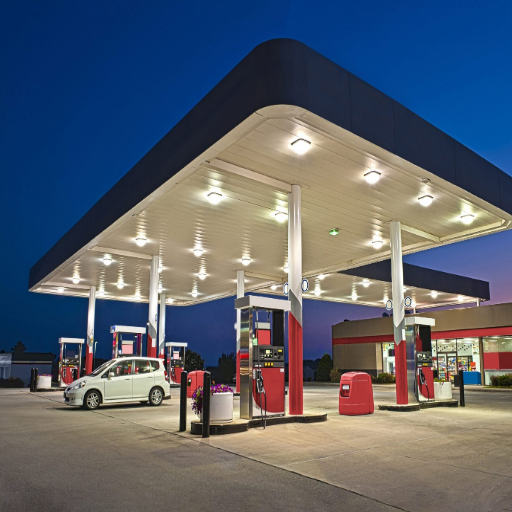
Setting aside the price of gasoline, a gas station typically makes a profit of 5 to 10 cents for each gallon it sells. Although this may appear relatively small, keep in mind that most of the money from fuel is consumed to cover operational costs, including buying fuel, transportation, taxes, and credit card fees. Thus, products with higher profitability, such as snacks or beverages, are a few examples, and anything else put on shelves by gas stations gains importance to offset the slim profits from fuel. The additional income remains vital to the overall profit-making venture.
Fuel Price Fluctuations and Revenue
Changes in fuel prices have a significant impact on gas station revenue and profitability. The wholesale price of fuel experiences numerous fluctuations due to changes in crude oil prices, variations in global supply and demand, and geopolitical upheavals, among other factors. When the crude price escalates, gas stations have to swell their operating costs, having to pay more for fuel in the purchase. However, due to the presence of numerous competitors in the market, they often cannot pass down the entire cost to the customer. Hence, there is a squeeze in their already thin profit margins.
For another example, data reveal that average gasoline prices in the U.S. ranged between $3.09 and $3.87 per gallon from August 2022 to August 2023, depending primarily on location and, to some extent, on market conditions. Paradoxically, during the price spurts, fuel sales at stations declined, as consumers cut back on expenses or traveled less. Gas stations, thus, find themselves balancing delicately between attracting consumers and managing costs.
More importantly, fuel price stability is crucial for maintaining a consistent income flow. When prices are kept steady, the consumers tend to hold regular buying behavior, allowing gas stations to forecast sales and inventory with fair accuracy. On the other hand, when prices are unpredictable, they create interruptions in customers’ purchasing behavior, such as the sale of low-margin items in stores, thereby squeezing income inflows for gas stations. Operators that do well address such threats by diversifying their purchasing channels, implementing loyalty programs, and offering discounts for retention purposes.
Revenue from Fuel vs. Other Services
Gas stations make revenue primarily from fuel sales, convenience store items, car washes, and additional services.
|
Key Point |
Description |
Revenue % |
Notes |
|---|---|---|---|
|
Fuel Sales |
Primary source |
~70% |
Low margin |
|
Convenience Items |
Snacks, drinks |
~30% |
High margin |
|
Car Washes |
Add-on service |
~5%-15% |
Growing |
|
Additional Services |
Repairs, ATMs |
Small share |
Significant |
Market Trends Affecting Fuel Sales Revenue
Shift Toward Electric Vehicles (EVs): As more people drive electric vehicles, the fuel sales market is being redrawn. Global market analyses have reported that sales of EVs increased by more than 50% in recent years and that this trend is expected to continue at an exponential rate, with governments encouraging emission reductions. This has, therefore, led to a long-term decline in the demand for fossil fuels at gas stations.
Price Variability of Crude: Any fluctuations in crude oil prices have a direct impact on fuel sales revenue. Price variations resulting from geopolitical tensions, disruptions in supply chains, and amendments or choices made by major oil-producing countries directly affect consumer behavior and, consequently, the profitability of gas stations. For instance, during price surges, consumers tend to curb their fuel consumption or opt for more fuel-efficient vehicles.
Environmental Policies: Governments are increasingly implementing stricter ecological policies to encourage the shift toward renewable energy sources. With the carbon tax, incentives for fuel-efficient technologies continue to enable consumers to reduce their dependence on conventional fuels, thereby reducing future fuel sales revenues.
The Rise of Alternative Fuels: The increasing availability of alternative fuels, such as biofuel, hydrogen, and compressed natural gas (CNG), alters customer preferences. These alternatives attract customers seeking greener energy options, thereby furthering the decline of traditional gasoline.
Fuel-Efficient Technologies: A modern vehicle is far leaner today, consuming less fuel per mile traveled on the road. For this is beneficial for the consumer who is cutting costs, but at the same time, it means a lesser amount of fuel is being purchased, leading to reduced revenue for gas stations that rely heavily on fuel sales.
Urbanization and Shared Mobility Services: More urban interventions will focus on augmenting public transportation infrastructures with shared mobility services, such as carpooling and ride-sharing apps. This reduces individual refueling requirements, thereby further decreasing fuel consumption.
These trends suggest that gas station operators need to diversify their core offerings, adapting to shifts in consumer demands and environmental imperatives. The focus on convenience services, alternative energy, and supplementary revenue streams on-site is increasingly essential in ensuring sustainability in a market in transition.
Additional Revenue Streams for Gas Stations
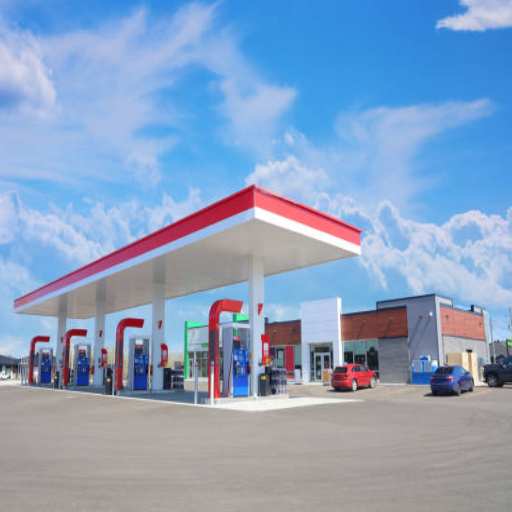
Gas stations can diversify their revenue streams to remain competitive and meet changing consumer demands. A significant opportunity to implement is setting up EV charging stations, especially as the number of EVs on the road continues to rise. The sale of convenience items, such as snacks, beverages, and other daily-use products, would encourage customers to spend more time and money on-site. Collaborations with delivery services or providing pick-up lockers for online orders can be a plus from a business perspective in attracting younger customers. A touch of car maintenance — such as car washes, oil changes, and tire checks — can offer service value to customers, while also providing a steady stream of income. All of these help gas stations stay relevant in an ever-changing market landscape.
Convenience Store Sales
Modern gas stations profit primarily from the convenience store offerings associated with them. In the U.S., convenience store sales exceed $250 billion annually, with food and beverage items accounting for a significant portion of this amount. Prepared food, which includes sandwiches, pizza, and other grab-and-go items, now accounts for a larger share of revenue as consumer preferences shift toward convenience and quick meals.
The drinks, however, put coffee and energy drinks at the very top of these products’ best-sellers. These products lead to larger orders, drive customers to other needs-related trips, and thereby increase the frequency of purchases. In line with this trend are health snack picks, which range from protein bars to fresh fruit to plant-based products, quickly growing to meet the increasing demand for healthier options.
Technology plays a crucial role in ensuring convenience stores operate smoothly. Self-checkout, reward programs, and mobile apps make things easier for buyers, boosting satisfaction levels and spending per visit. These technological upstarts, along with a direct focus on fresh and high-margin products, delineate the transformation of the traditional convenience store into a hub of community life.
Car Wash and Service Station Revenue
Car wash and service stations are now a major part of convenience store revenue, with significant contributions to overall profitability. The world car wash services market is moving at a rapid pace. Presently, the CAGR is anticipated to be around 4-5% over the next few years. This is due to rising consumer awareness of the importance of proper vehicle maintenance and the increasing acceptance of eco-friendly car wash services.
Modern car washes incorporate systems such as water recycling and touchless washes, providing businesses with the added advantage of marketing these facilities directly to eco-conscious customers, while also reducing operational costs. Oil and fuel service stations attached to convenience stores generate extra foot traffic, as many customers purchase snacks, soft drinks, or other items in between.
In addition, service stations generate revenue from maintenance services such as oil changes, tire rotations, and vehicle inspections, which appeal to the growing number of owners seeking convenience. These complementary services upgrade service stations into one-stop destinations, thus increasing customer stay and growing overall business profitability.
Advertising and Partnerships
Advertising strategies and strategic partnerships have a significant influence on enhancing the visibility and profitability of the service station. Digital advertising through paid social campaigns and programmatic advertising enables marketers to use promotions targeted at specific groups of potential customers, such as those who tend to be travelers or local consumers. For example, studies reveal that 78% of consumers report making decisions about service facilities based on targeted online ads.
Services with a famous brand stand out above those on the market and enhance credibility by association with other reputable establishments. Partnerships with renowned beverage and snack brands, such as sharing names, can lead to a 20% increase in in-store buying. Furthermore, the combination of loyalty program variants linked to an extensive network or a car care brand can foster long-term relationships through repeat business. According to studies, 73% of consumers believe that a service station should offer integrated loyalty rewards programs, indicating the significance of such partnerships in the modern-day marketplace.
A clever combination of advertising expertise and strategic partnerships enables service stations to present themselves as indispensable venues for on-the-go convenience and high-quality service.
The Financial Landscape of Gas Stations
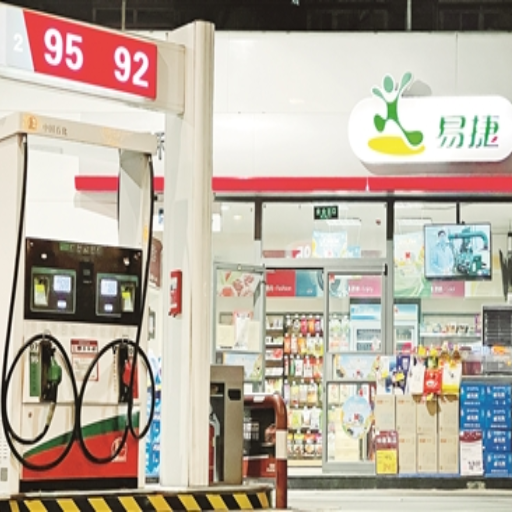
Thin profit margins and fluctuating fuel prices shape the revenue paradigm for gas stations. While fuel sales account for approximately 80-90 percent of a gas station’s income, the profit margin on fuel sales is very low, as gas stations are forced to compete with one another on prices. So, stations make most of their profits from ancillary services, such as car washes, convenience store sales, and food services. Effective cost management and strategic diversification are crucial to achieving long-term financial viability in this industry.
Summary of Gas Station Earnings
Gas stations draw their income from various revenue streams. Whilst fuel sales may account for more than 60% of total revenues, the prices charged barely have any profit margin, which can usually be as high as 2-3% at best; this is due to cutthroat competition and fluctuating oil prices. Non-fuel sales, therefore, take a paramount role. Convenience store sales-high-margin items, including snacks, drinks, and tobacco products, generate approximately 30-40% of gross profit. Lately, services such as car washes and quick-service food sales have also gained traction, further enhancing profitability.
The latest data indicate that gas station owners who capitalize best on EV charging station and loyalty program trends are likely to reap significant profits. For instance, a locality-dependent level of supply and demand may result in each EV charging station earning an additional $5,000 to $10,000 annually. Gas stations, increasingly, may reap the utmost profits through diversification and actively tracking the ever-changing market trends.
Future Trends in Gas Station Revenue
In the years to come, I foresee gas station revenues being derived from diversification and adaptation to the emerging consumer requirements. Adding EV charging stations, upgrading convenience stores, or implementing technology-based enhancements can considerably increase the earning potential. Green-energy options, coupled with service expansions, would lead us to new trends that create revenue streams in alignment with the shifting transportation and energy landscape.
Final Thoughts on Profitability in the Industry
For long-term profitability, businesses must adapt to market trends and technological advancements of the era. According to recent data, investments in renewable energy worldwide are expected to exceed $1 trillion per annum by 2030, presenting tremendous opportunities for industries to adopt sustainable practices. Moreover, the establishment of EV-related infrastructure, such as charging stations, is crucial, as the electric vehicle (EV) market is projected to grow at a compound annual growth rate of 23.1% between 2023 and 2030. Consumer preferences are also evolving, with an increasing demand for green technologies and seamless digital integrations.
Thanks to AI-powered analytics for supply chain optimization, real-time customer engagement platforms, and predictive maintenance tools, companies streamline operational costs to improve profitability. Hence, by embracing change and sustainability, industries can better withstand the volatility of an ever-changing industry landscape, which is now increasingly driven by environmental and technological considerations in terms of consumer preferences and regulatory standards.
Reference Sources
A Generic Decision Model of Refueling Policies: Case Study in a Brazilian Motor Carrier
Comparison with Classification Algorithms in Data Mining of a Fuel Automation System’s Sales Data
Frequently Asked Questions (FAQs)
How Much Do Gas Stations Make from Fuel Sales?
Gas stations typically earn a slim profit margin on gasoline sales, generally around 10 to 15 cents per gallon. This means that the profit is relatively low compared to other retail businesses. However, the volume of fuel sold can lead to significant total profits, especially during periods of high fuel prices, which can positively impact profitability.
What Is the Revenue of a Gas Station?
The annual revenue of a gas station can vary significantly based on location, fuel prices, and the services offered. On average, a gas station can generate anywhere from $1 million to $5 million per year, with a large portion of this revenue coming from gas sales and convenience store items.
How Do Profit Margins on Fuel Affect Gas Stations?
Profit margins on fuel are generally quite slim, often less than 5%. However, gas stations can boost their overall profitability by offering high-margin convenience store items, such as snacks and beverages, which can significantly impact the station’s revenue.
What Additional Services Can Gas Stations Offer to Increase Profit?
Many gas stations enhance their profit by providing additional services like car washes, auto repair services, and even installing EV charging stations. These services not only increase revenue but also drive traffic to the station, encouraging customers to purchase fuel and convenience items.
How Do Convenience Store Sales Contribute to Gas Station Profits?
Convenience store sales can significantly boost a gas station’s profits. Items like snacks, beverages, and other convenience items typically carry higher profit margins compared to fuel sales. Business owners often rely on these sales to offset the slim margins from gasoline.
What Factors Impact the Profitability of Running a Gas Station?
Several factors can significantly impact profitability, including fuel prices, operating expenses, and compliance costs related to licenses and permits. Strategic planning and inventory management are crucial for maximizing profits, particularly in the face of volatile fuel prices.
How Much Do Gas Stations Make on Non-Fuel Sales?
Non-fuel sales, including convenience store items and services, can account for a significant amount of a gas station’s revenue. Business owners often find that these high-margin products can provide a more stable income compared to the fluctuating profits from gasoline sales.
What Are the Financial Benefits of Investing in a Sole Proprietorship Gas Station?
Investing in a sole proprietorship gas station can offer benefits such as higher profit margins from convenience store sales and control over business operations. With careful management and strategic planning, a gas station can become a profitable venture, despite the challenges posed by fuel price volatility and competition.
How Can Gas Stations Generate Revenue from Car Washes?
Car washes are an excellent way for gas stations to generate additional revenue. By offering a service that complements fuel purchases, business owners can attract more customers to their stations. Car wash services typically have higher profit margins compared to gasoline, making them a lucrative addition to the gas station’s offerings.





